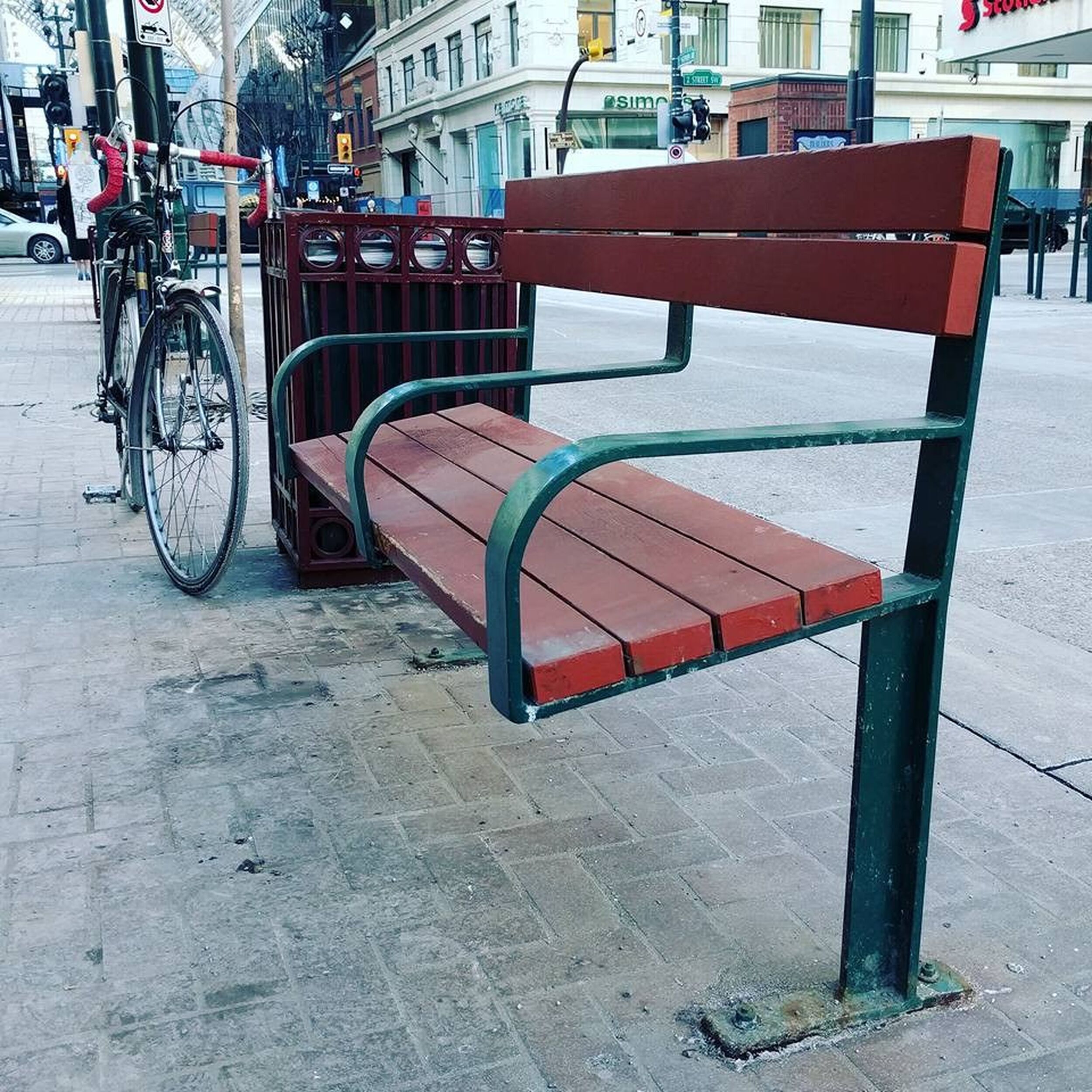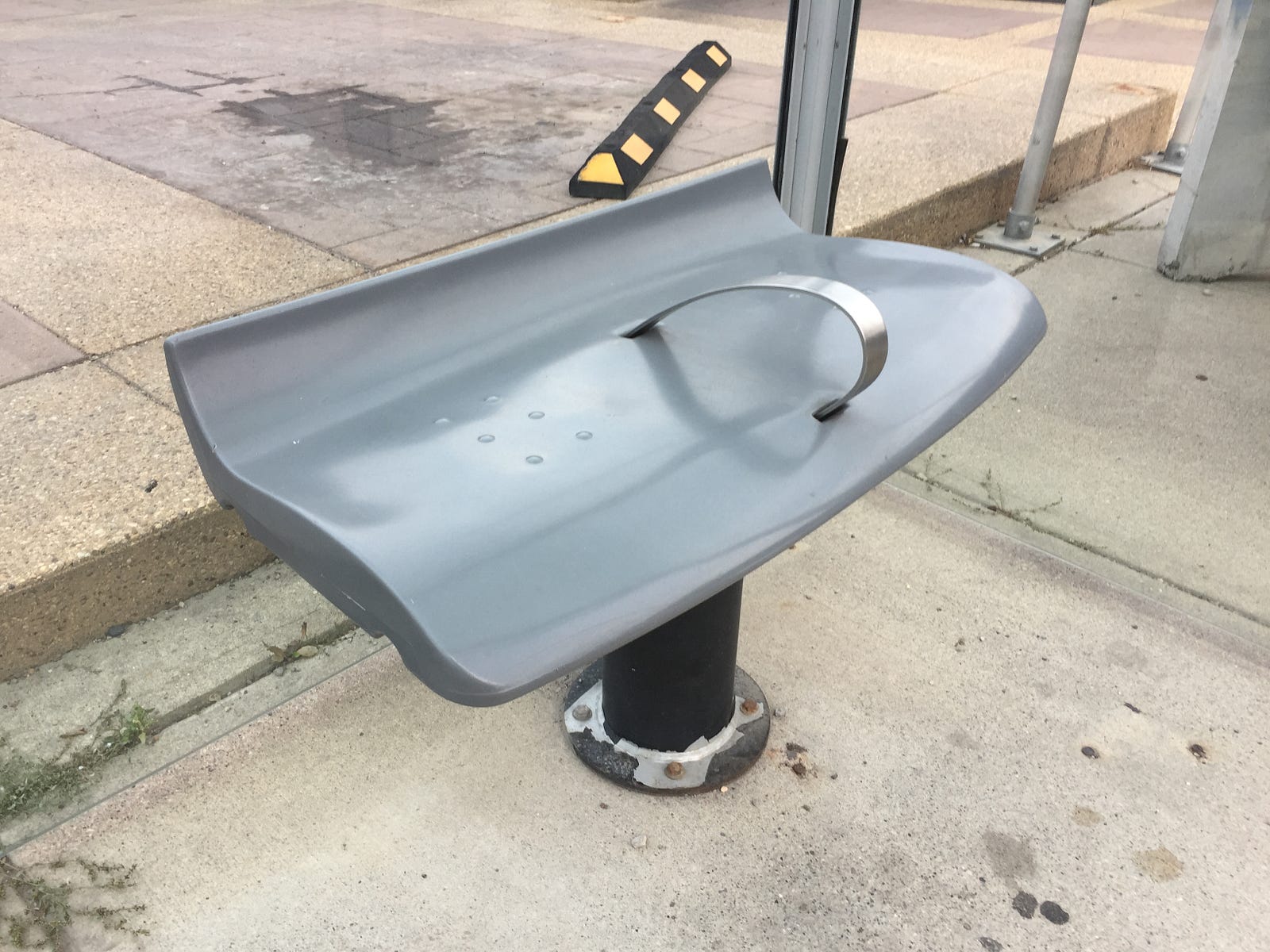
Forget Safeway — why aren’t we talking about hostile design in city projects?
Unpleasant design is incorporated into Calgary public spaces from the get-go.
Safeway is coming under fire for recently installing rubber barriers at its Calgary Kensington location to deter loitering, an example of what’s sometimes called hostile or unpleasant design—often directed at homeless people.
But amid the outrage over Safeway, no one seems to be taking about how such design is regularly used by the City of Calgary in public projects. And not as an afterthought, either.
It’s built in right from the get-go, albeit in subtler ways.
On transit platforms and stops, Calgary has followed the lead of other cities by replacing flat seating with curvy benches that have metal ridges dividing the surface into individual seats. These ridges are not armrests; they serve no practical use for someone waiting for a train.

They do, however, render the surface unusable as a place where a person lay down. A comfortable surface has been replaced by an uncomfortable one.
“Because the presence of homeless people in city centres is less and less tolerated, this became a very popular solution,” says the website for the book Unpleasant Design.

Take a seat by the Peace Bridge, one of Calgary’s prime attractions, and you’ll have to watch where you sit. That’s because there are metal blocks attached to the benches that deter skateboarders—while also making the surface less appealing for would-be sleepers.

Safeway, a private company, is an easy target for ire. The barriers it added are conspicuous and obnoxious. They’re basically rubber parking stops. They’re garish.
But if we’re upset about the Safeway barriers because they’re cruel and anti-people, shouldn’t we be likewise upset about more visually elegant forms of hostile design employed by our municipal government?
It doesn’t make much sense to be outraged about one and not the other.
Jeremy Klaszus is editor-in-chief of The Sprawl.
CORRECTION: The original version of this post said the metal blocks on benches by the Peace Bridge were to deter would-be sleepers. The story has been corrected to clarify that they are deterrents for skateboarders.
Support in-depth Calgary journalism.
Sign Me Up!We connect Calgarians with their city through in-depth, curiosity-driven journalism—but can't do this alone! We rely on our readers and listeners to fund our work. Join us by becoming a Sprawl member today!
